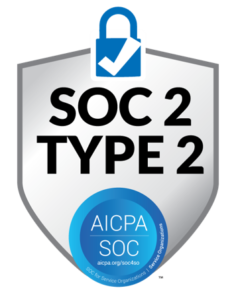There was a time when labor management systems (LMS) were primarily used to monitor the performance and the cost of labor, and larger organizations tended to be the ones deploying them. Today, an LMS is as necessary as a Warehouse Management System (WMS). According to Evan Danner, CEO at TZA, “When you have as much as 60% of your operating cost tied to labor, you really need to invest in a solution to help you optimize performance and retention to stay competitive.”
Today’s LMSs are being used to combat the top issues causing high employee turnover rates in distribution centers, including non-competitive wages, too much overtime, and poor management communication. Here’s how…
CREATING COMPETITIVE WAGES
Most companies with a competitive wage problem can’t just increase their wages significantly. If they could, they probably would have already done it. These companies need a self-funding incentive program that encourages associates to operate at or above the minimum expected performance level.
Building a successful incentive program requires a few things:
#1 STANDARD OPERATING PROCEDURES (SOPS)
A baseline requirement of any high-performing operation is to have standard operating procedures (SOPs) in place. This outlines the most efficient and safe manner in which to complete an assignment. Additionally, having defined SOPs results in a more effective on-boarding experience for new employees, improving both overall facility performance and retention rates. Once SOPs are in place, fair and equitable performance standards can be developed, which is the cornerstone of any effective incentive pay program.
#2: ENGINEERED LABOR STANDARDS
Once you have your SOPs in place, you need multi-determinant engineered labor standards to support a program that is fair to both the employee and the company. Multi-determinant standards use more than one variable to calculate a performance expectation and automatically adjust as work content changes. For example, a standard for picking may use the following:
- Number of lines
- Number of cases
- Number of eaches/inner packs
- Total cube
- Total weight
- Dynamic travel calculation based on specific pick location
#3: LABOR MANAGEMENT SYSTEM
With SOPs in place and engineered labor standards built, you need an LMS to accurately calculate your standards and report on individual, team, department, facility and network performance. However, today’s labor management systems are much more than calculation engines. Tier 1 labor management systems also provide managers with the tools they need to better plan and adjust their resources in real-time, help associates increase their performance through observation and coaching, and analyze operational gaps through business intelligence tools.
Implementing an incentive pay program without SOPs, engineered labor standards and an LMS is often-times a recipe for disaster. Unfair performance expectations can lead to low morale and higher turnover. Also, keep in mind, if the standards are set too low, they can lead to unnecessary payout, which will increase the cost per unit.
But… if you deploy the right combination of SOPs, engineered labor standards, and an LMS, your employees will earn more, and you’ll be able to more than offset that wage increase with an overall reduction in labor cost per unit. A self-funding incentive pay program is really a win-win for everyone.
REDUCING OVERTIME
In an environment that has constant fluctuating demands, labor planning is the backbone of an effective operation. For many companies, inefficient labor planning and a lack of visibility into real-time progress is the main cause of excessive overtime. Manual scheduling with spreadsheets does not allow organizations to accurately model and plan labor.
An LMS delivers the functionality to correctly calculate the number of associates needed in each period to meet your specific volume.
Additionally, more sophisticated labor management systems can automatically schedule specific individuals based on their skills, performance level within the area, seniority, and/or home department, which will assure your plan is not only cost-efficient but executable. Proper labor planning and the ability to make real-time adjustments to labor assignments throughout the day can reduce overtime by as much as 25%.
IMPROVING CULTURE & MANAGEMENT
Beyond increased pay and reduced overtime, associates want to work in a supportive environment. Creating the right culture starts with your management team engaging with your hourly associates on a consistent basis. This sounds easy but is often hard to do when most days there is more to do than time to do it. An LMS provides supervisors with the tools they need to develop an effective feedback loop with associates to build better relationships and drive continuous improvement.
With an LMS, you can create scheduled engagements. This results in more consistent interactions that show associates you care about them and their contribution to the company. An LMS will also automatically identify any associates that need additional coaching and schedule a coaching engagement for the appropriate floor manager.
An LMS also supports the use of Production Boards on the floor, which provide critical operational metrics and recognition messaging throughout the day to the associate team. In our experience, this is a great way to recognize high achievers and create some friendly competition at the department level.
WANT TO LEARN MORE ABOUT WHAT IT TAKES TO CREATE A HIGH-PERFORMING WORKFORCE?
Labor management technology presents the opportunity to better plan and manage your operation in real-time, improve your culture, boost workforce performance, and reduce your cost per unit. For more insight Schedule a ProTrack LMS Demo or Complimentary Operational Labor Audit.
You can also use our Contact Form and someone from our team will reach out to help or call us directly at (800) 229-3450.
Connect with TZA today to learn how ProTrack LMS and TZA’s supporting labor management services can transform your distribution centers into high-performance operations.
Related TZA Resources
DOES MY DISTRIBUTION CENTER HAVE A TURNOVER PROBLEM?
THREE VITAL LABOR MANAGEMENT COMPONENTS TO COMBAT LABOR AND PRODUCTION ISSUES


